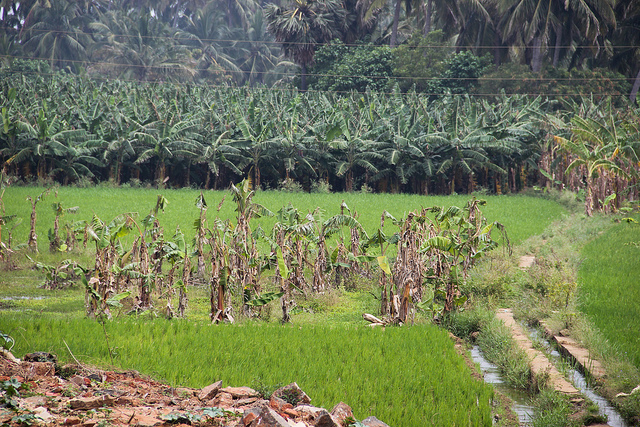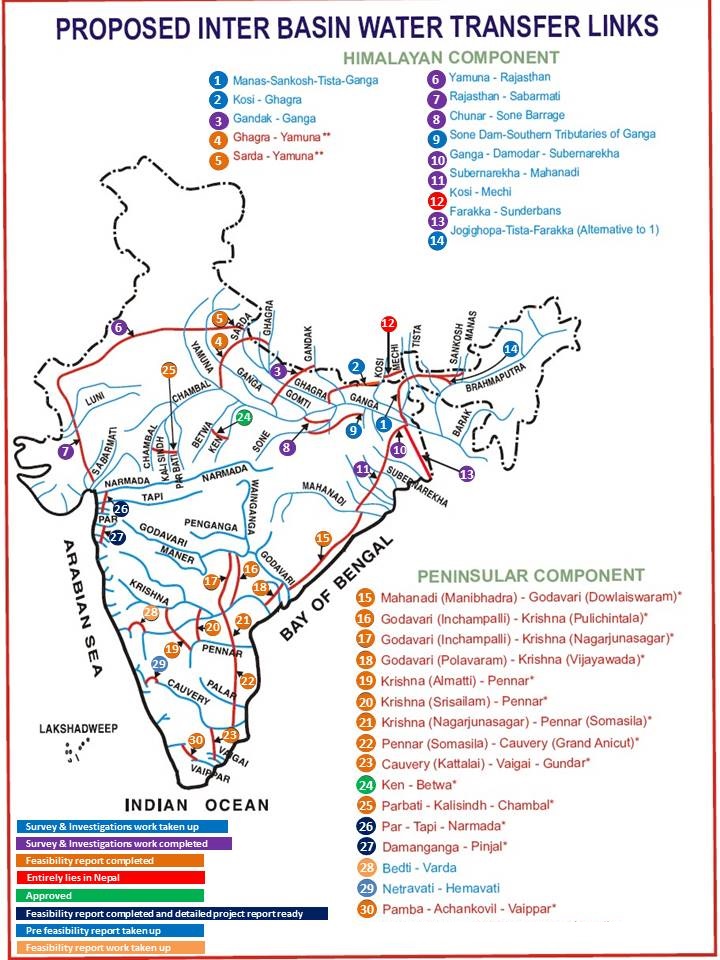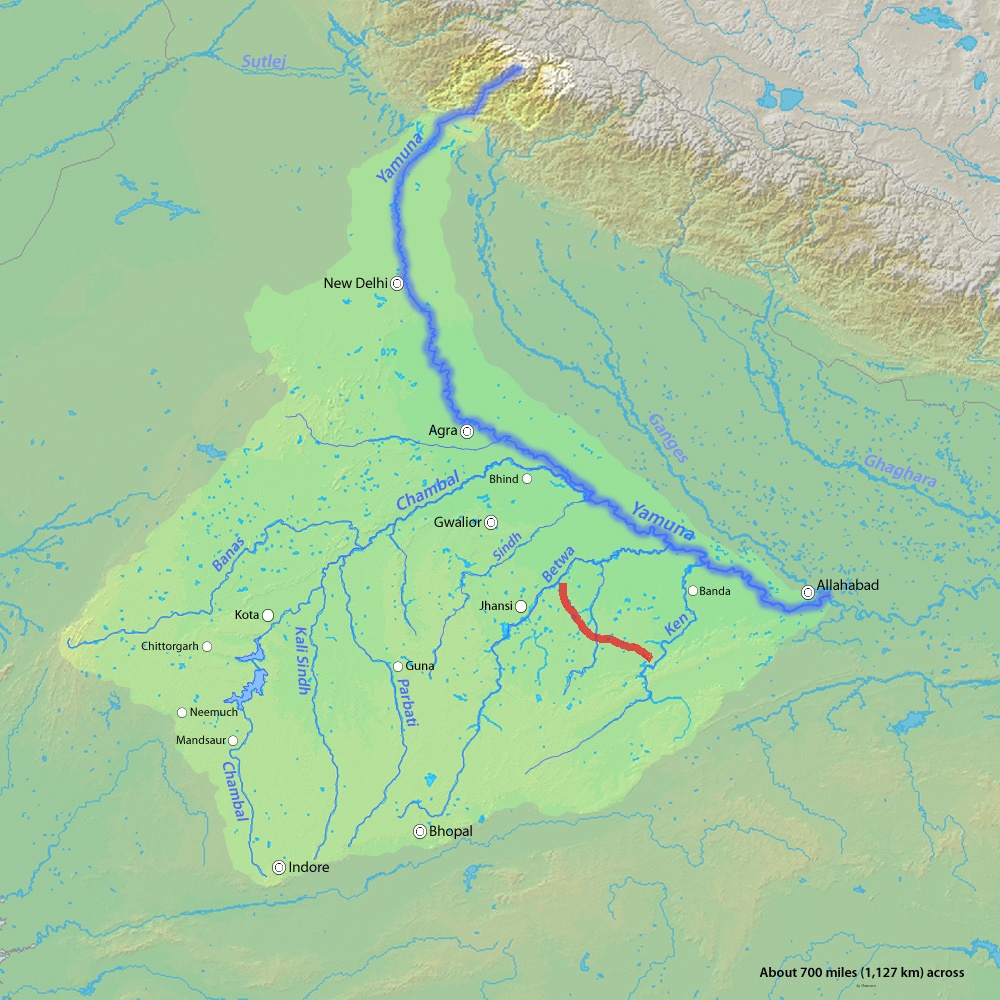
The National River Linking Project (NRLP) formally known as the National Perspective Plan, envisages the transfer of water from water ‘surplus’ basins where there is flooding to water ‘deficit’ basins where there is drought/scarcity, through inter-basin water transfer projects.
Digging further into the term 'surplus' as per the Government, states that it is the extra water available in a river after it meets the humans’ requirement of irrigation, domestic consumption and industries thereby underestimating the need of the water for the river itself. The term 'deficit' has also been viewed in terms of humans only and not from the river's perspective, which includes many other factors.
But before we get deeper into the subject in terms of feasibility and so on, let's first understand the aim, benefits claimed, cost and history of the project.
History behind river interlinking
While the timeline has the history since the project's conception 125 years ago, our focus is on the most recent event which brought it back into the limelight.
In 2002, the then President of India Abdul Kalam mentioned the river linking project during a speech. He proposed it as a solution to India's water woes after which an application requesting an order from the Supreme Court on that matter was submitted. The application was converted into a writ petition and finally, in October 2002, the Supreme Court ordered the Central Government to initiate work on inter-linking the major rivers of the country.
In the same year, a task force was appointed and a deadline of 2016 was set to complete the entire project that would link 37 rivers but nothing concrete happened until almost a decade ago. On Feb 27, 2012, the Supreme Court ordered the constitution of a “Special Committee for Interlinking of Rivers” headed by the Minister of Water Resources.
Now here arises the question of judicial intervention. Ramaswamy R Iyer in his paper says that the accountable body to deal with such matters is Parliament and not the Supreme Court. The Supreme Court's responsibility is to ensure that the fundamental rights of citizens should not be denied, but as to how the fundamental rights will be ensured to the person is not in its ambit.
The UPA Government was not in favour of the interlinking project, but with the coming of the NDA Government, river linking is once again in the limelight. Budget 2014-15 has earmarked Rs. 100 crore to expedite the preparation of Detailed Project Reports for this purpose.
Scope of the Project
The National River Interlinking Project will comprise of 30 links to connect 37 rivers across the nation through a network of nearly 3000 storage dams to form a gigantic South Asian Water Grid. It includes two components:

- Himalayan Rivers Development Component under which 14 links have been identified. This component aims to construct storage reservoirs on the Ganga and Brahmaputra rivers, as well as their tributaries in India and Nepal. The aim is to conserve monsoon flows for irrigation and hydropower generation, along with flood control. The linkage will transfer surplus flows of the Kosi, Gandak and Ghagra to the west. A link between the Ganga and Yamuna is also proposed to transfer the surplus water to drought-prone areas of Haryana, Rajasthan and Gujarat.
 Peninsular Rivers Development Component or the Southern Water Grid, which includes 16 links that propose to connect the rivers of South India. It envisages linking the Mahanadi and Godavari to feed the Krishna, Pennar, Cauvery, and Vaigai rivers. This linkage will require several large dams and major canals to be constructed. Besides this, the Ken river will also be linked to the Betwa, Parbati, Kalisindh, and Chambal rivers.
Peninsular Rivers Development Component or the Southern Water Grid, which includes 16 links that propose to connect the rivers of South India. It envisages linking the Mahanadi and Godavari to feed the Krishna, Pennar, Cauvery, and Vaigai rivers. This linkage will require several large dams and major canals to be constructed. Besides this, the Ken river will also be linked to the Betwa, Parbati, Kalisindh, and Chambal rivers.
Proposed benefits of the Project
- Hydropower generation
The river interlinking project claims to generate total power of 34,000 MW (34 GW). Out of this, 4,000 MW will come from the peninsular component while 30,000 MW from the Himalayan component. It's hard to picture 34,000 MW of power, isn't it? Imagine 34 Tehri dam-kind of hydropower projects and there you have it! Now let's give it some perspective in terms of other costs. A single Tehri dam, which has the capacity of 1000 MW was developed at the cost of total submergence of Tehri town and 40 villages and partial submergence of 72 other villages affecting the lives of more than 100,000 people!
The addition of hydropower is expected to curb the drinking water woes of millions and supply water to industries in drought-prone and water-scarce cities in south and west India but do we need such a big project to end our water woes?

Not according to Parineeta Dandekar, who works with South Asia Network on Dams, Rivers & People (SANDRP). "There are a number of cheaper, socially and environmentally-benign options available to us, which can result in even larger benefits than a grand project. These include increasing irrigation and project-specific efficiency, rational cropping patterns, putting to use our existing mega infrastructure which is under-performing, using water equitably, harvesting rainwater and managing demand better, among others."
"In many places across India, such initiatives have shown their positive potential while larger scale projects have failed miserably. Best example is Maharashtra, which has the country's largest concentration of large dams and the least irrigation potential. When this is known, how can we ignore these aspects and still hanker after large dams and schemes based on such infrastructure like Interlinking? Doing so is irresponsible and foolishly optimistic, without understanding our reality", she adds.
- Irrigation benefits
 The project claims to provide additional irrigation to 35 million hectares (m ha) in the water-scarce western and peninsular regions, which includes 25 m ha through surface irrigation and 10 m ha through groundwater. This will further create employment, boost crop outputs and farm incomes and multiply benefits through backward (farm equipment and input supplies) and forward linkages (agro-processing industries). Along with this the project is expected to create several benefits for navigation and fisheries.
The project claims to provide additional irrigation to 35 million hectares (m ha) in the water-scarce western and peninsular regions, which includes 25 m ha through surface irrigation and 10 m ha through groundwater. This will further create employment, boost crop outputs and farm incomes and multiply benefits through backward (farm equipment and input supplies) and forward linkages (agro-processing industries). Along with this the project is expected to create several benefits for navigation and fisheries.
But do we need to add to our irrigation potential through such a huge project?
The answer is perhaps a no! There could be many viable options including rainwater harvesting and groundwater recharge at the community level that could increase the irrigation potential of the nation.
Cost of the Project
The total cost of implementation is Rs. 560,000 crore at 2002 price levels with an annual outlay of Rs. 16,000 crore over 35 years. This cost consists of three components which are Rs.106,000 crore for the peninsular component, Rs.185,000 crore for the Himalayan component and Rs. 269,000 crore for the hydroelectric component. In terms of usage, the cost is estimated as Rs. 135,000 crore for the power component and Rs. 425,000 crore for irrigation and water supply.
Again to put this collosal amount in some understandable proportion, we can contrast it to the Tehri Dam, which cost Rs. 8000 crore.

Proposed interlinking projects and their status?
The proposed interlinking projects and their status is given in the map below. A document detailing the current status is also attached for further reference.

Out of all the interlinking projects, the Ken-Betwa river link has been approved and the Government is now keen to approve the Daman Ganga-Pinjal Link (Gujarat and Maharashtra) and Par-Tapi-Narmada Link (Gujarat) whose detailed project reports (DPRs) are ready for consideration.
Perceived impact of the Project
"Disaster", is what Himanshu Thakkar from SANDRP and Shripad Dharmadhikary from the Manthan Adhyayan Kendra say when asked about the interlinking project. Experts also refute the core basis of the project, which terms the river either 'surplus' or 'deficit'.
 In the words of Ashish Kothari from Kalpavriksh, a non-profit organisation that works on environmental and social issues, "The proposal is based on the serious ecological myth that river waters which drain into the sea, are going ‘waste’. When rivers wind through forested, cultivated, and settled lands, they carry with them large amounts of silt. This silt is deposited along the way, enhancing the productivity of the surrounding lands, and finally of the coastal waters. This is the basis of the rich agriculture of the plains of India, and of the rich fisheries off our coasts. The river also pushes out the sea, which would otherwise invade deep into the land, and erode the coast."
In the words of Ashish Kothari from Kalpavriksh, a non-profit organisation that works on environmental and social issues, "The proposal is based on the serious ecological myth that river waters which drain into the sea, are going ‘waste’. When rivers wind through forested, cultivated, and settled lands, they carry with them large amounts of silt. This silt is deposited along the way, enhancing the productivity of the surrounding lands, and finally of the coastal waters. This is the basis of the rich agriculture of the plains of India, and of the rich fisheries off our coasts. The river also pushes out the sea, which would otherwise invade deep into the land, and erode the coast."
Himanshu Thakkar says, "There is no scientific basis to arrive at the conclusion that any river basin is surplus or deficit, since we have not done full assessment or implementation of options in any river basin or even a sub basin".
The project could also create many water conflicts both at the state and international level. The country is already reeling due to many inter-state water conflicts like the Ravi-Beas Water Dispute between Punjab-Haryana-Rajasthan and the Cauvery Water Dispute between Kerala-Karnataka-Tamil Nadu-Puduchery to name a couple. At the international level also, India is at crossroads with Pakistan over the sharing of the Indus' water, with Bangladesh over the Teesta's water, with China over the Brahmaputra's water and with Nepal over the Mahakali's water.
In such a scenario, does India really have the capacity to take up a few or rather many more water conflicts arising over the riparian rights from the countries like Pakistan and Bangladesh, that are in the downstream?
The project envisages the building of many dams, canals and tunnels with some of them having high lifts upto 120 m. This will lead to a huge social and environmental cost. The recent example is the proposed Ken-Betwa link, which has been approved by the Government. The project puts in danger over 4,100 hectares of forest land or 8% of the Panna National Park. Although the project needs environment clearance, wildlife clearance and Supreme Court permission since it involves the diversion of land within a protected area of the tiger reserve, the Water Ministry has sought none.
Thus, if a single project of interlinking could accrue such an environmental cost, then one can only imagine how it will impact the country's biodiversity if all the 30 links are implemented.
Along with the ecological cost, the project will also bring a great human cost in terms of those displaced by it. "No estimates exist of the number of people who will be so affected by the river linking project, but it would surely run into hundreds of thousands…and which state or central government has shown the ability to properly rehabilitate such people? Where, in any case, is the land available to resettle them…other than on forests, pastures, and wetlands?", says Ashish Kothari.
The Government has also ignored the dynamics of the river while planning the project. Every river has its own quality so will the mixing of water not affect the particular quality of the river, or to say when most of the rivers in the country are polluted, will this not cause mixing of a less polluted river with a more polluted one?
In conclusion, the interlinking of rivers is presumed to be a total disaster for the nation. The Government has formulated such a huge project while ignoring the alternatives such as decentralised watershed development, rainwater harvesting, groundwater recharge, reviving the existing local sytems of water harvesting and irrigation.
/articles/national-river-linking-project-dream-or-disaster